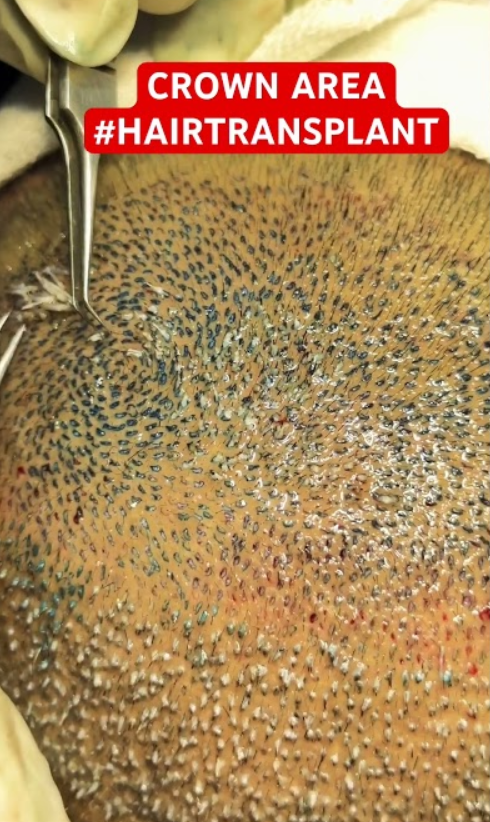Hair loss is a common concern that affects millions of individuals worldwide, with many seeking solutions to restore their confidence and youthful appearance. Among the various areas where hair thinning or baldness can occur, the crown area—located at the top back of the head—is particularly noticeable and can significantly impact one’s overall look. A crown area hair transplant is a targeted surgical procedure designed to address this specific area of hair loss.
Understanding Hair Loss in the Crown Area
Hair loss can stem from various causes, including genetics, hormonal changes, stress, and certain medical conditions. In men, crown area hair loss is often a hallmark of male pattern baldness, which is linked to the hormone dihydrotestosterone (DHT). For women, hair thinning may be more diffuse, but the crown area can also show noticeable thinning. Regardless of the underlying cause, the psychological effects of hair loss can be profound, leading to decreased self-esteem and social anxiety.
The Hair Transplant Procedure
A crown area hair transplant typically involves two main techniques: Follicular Unit Transplantation (FUT) and Follicular Unit Extraction (FUE).
- Follicular Unit Transplantation (FUT): This technique involves removing a strip of skin from the donor area, usually located at the back of the head, which contains healthy hair follicles. The strip is then dissected into individual follicular units and transplanted to the crown area. FUT can yield a higher number of grafts in one session, making it suitable for those requiring extensive coverage.
- Follicular Unit Extraction (FUE): In contrast to FUT, FUE involves extracting individual hair follicles directly from the donor area using a specialized tool. This method is less invasive, leaving tiny scars instead of a linear one, and it may be preferred by individuals concerned about visible scarring.
Both techniques are performed under local anesthesia, and the choice between them depends on individual circumstances, including the extent of hair loss and personal preference.
Recovery and Results
Post-surgery, patients can expect some swelling and discomfort in the transplanted area, but these symptoms typically subside within a few days. It’s essential to follow the surgeon’s aftercare instructions to ensure optimal healing and hair growth. Most patients can return to their normal activities within a week, although full results may take several months to appear.
Typically, transplanted hair begins to fall out within the first few weeks post-surgery—a natural part of the process known as “shock loss.” However, new hair growth should start to become noticeable around three to six months after the procedure. By the one-year mark, many patients can enjoy a fuller head of hair, with results appearing natural and well-integrated with existing hair.
Benefits and Considerations
Crown area hair transplants can provide significant benefits, including improved self-image and increased confidence. The results are often permanent, as the transplanted hair is taken from areas resistant to balding.
However, potential candidates should consider factors such as their overall health, the extent of hair loss, and realistic expectations regarding the outcome. Consulting with a qualified hair transplant surgeon is crucial to determine the best approach and ensure a successful result.
Conclusion
A crown area hair transplant can be a life-changing procedure for those struggling with hair loss in this specific region. By understanding the techniques involved, recovery process, and potential outcomes, individuals can make informed decisions that lead to a renewed sense of self and confidence. As technology and techniques in hair restoration continue to evolve, the prospect of regaining a full head of hair is more attainable than ever.
